Vellum Venom: 2013 Lincoln MKZ

Car Design college was a wake-up call for this auto-obsessed kid: it festered with two-faced people. There are bastard-coated souls smiling to your face, stabbing you in the back during Portfolio Review. Or friends that pity you, being your crutch via white lies and false kindness. Bad news, especially for a Lincoln-Mercury fanboi saddened by how the MKZ became as two-faced as the industry that spawned it.
The Lincoln MKZ trades the sistership Ford Fusion’s wannabe Aston schnoz for a gigantic butterfly smashed on the face of today’s upright, stubby proportioned sedan. It works, as there’s a balance of soft curves and thin lines with hard bends and thick marks.
The butterfly grille is organic but peep that Chevelle SS worthy hood bulge! The bulge has a strong center backbone and “power dome” shape that shrinks as it reaches the front fascia. Very Hot Rod Lincoln.
The grille’s thick/thin teeth add significant depth. Their harmonizing with the grille frame’s upward bend only adds to the butterfly effect.
Note the bumper’s creased beak: too subtle to catch the eye, yet clashes with Lincoln’s new “point free” emblem. This nose either needs a belt sander or the 2014 Navigator emblem.
Aside from the plastic block off plates as the grille reaches the headlight (note how the black abruptly turns gray), this is an elegant piece of kit.
The butterfly grille effortlessly translates and surrounds the pointy-fast headlight assembly. It’s a dramatic change from the first MKZ, as you’d be hard pressed to mistake it for a Fusion. (yet) The lower valence’s chrome trim and fog light harmonize with the butterfly too.
The headlights may look flat, but not so!
Note the lighter red section below my finger: an interesting soft bend at the hood’s edge, in contrast to the power done hood. Forehead much? It’d be less flabby if the bend started with the headlight’s leading edge and swept back into the body. Then, instead of being a receding hairline, we’d see a transition between the hood-fender cut line and the central power dome.
Too bad about the solid grill space on the lower valence. It looks cheap, yet nothing like the yards of fake texture on spindle-grilled Lexi and big mouth Audis.
Aside from that odd forehead (it really needs to start at the headlights) the MKZ pushes the right buttons. Everything dances to the same DJ, and the bumper’s soft curve sympathizes with the butterfly grille. And it transitions to the muscular fender haunch well.
No overhang and a very European signal light; tightly constrained by the wheel arch’s flat edge. And if Edsel Ford’s Continental was influenced by the Europeans…wink, wink!
Interesting interplay between smoked and shiny surfaces! The MKZ’s rims blends unique ideas seamlessly, in stark contrast to the rough draft originally seen on the MKS.
Clean, restrained firewall design: good use of what should rightly be a small patch of real estate.
And then it became all Fusion: the latest iteration of wrong-wheel drive American Luxury is a Fusion with more chrome. Literally, thanks to the solid chrome DLO Fail between the A-pillar and the door.
The MKZ chrome DLO FAIL looks more expensive than the Fusion, in the same way Target is classier than WalMart.
Again, too much of a Fusion…even if it really isn’t. If you are a badge engineer, my analysis of the Fusion will come in handy. The door skins are different, but something’s lost in translation. Perhaps it’s the BMW style handles. Or the less edgy cut lines that still retain the Fusion’s angular windows. More on those later.
The point? The “let’s avoid badge engineering” mantra that we all believe needed more money, more dedication and less modification of an existing platform to work on the MKZ.
A fixed vent window paired with DLO fail? Usually one replaces the other, but the MKZ needs ‘em both to “accomplish” an A-pillar with such speed. Ford’s insistence to honor Aston Martin via family sedan failed. (Aston uses the fixed window, which obviously works on that body.)
The chrome-y Fusion mirrors work quite well. Too bad they aren’t unique, but whatever. This isn’t the first (last?) front wheel drive Lincoln to portend the brand’s future, as this isn’t a 1988 Continental.
Wait, is this one of them fancy flagship BMW 7 series door pulls? A pretty shameful rip off. So kudos to Lincoln for not raiding Ford’s parts bin, ribbons of shame for raiding BMW’s warehouse instead.
This MKZ-specific B-pillar cut line works better than the Fusion from whence it came: the door and B-pillar share a common line.
Too bad about the C-pillar: the MKZ’s cut line is flabby on such a porky side profile. The Fusion’s extra surface tension enhances the package, instead of adding unnecessary rotund-ness.
Perhaps badge engineering ain’t such a bad thing, no? No, it’s bad…that was a trick question, son!
And this is where it gets screwy: remember the balance of soft (butterfly) and hard (power dome hood) elements up front? There’s a bizarre, two-faced, ending to this tale. (tail?)
The problem stems from the razor-sharp tail lights, artificially pushing back to the quarter panel/C-pillar. And the soft spot once reserved for a “tire hump” or faux Continental kit. It’s the same idea as the power dome hood, taken to an incorrect extreme. What was needed?
The ideal balance of soft and hard elements presented up front. How the MKZ’s butterfly grille blends with the curves of its lower valence. This avoids the two faces of the MKZ’s design.
The rear door’s flab looks muscular from here, but the number of cut lines implies “hack job”. That is, there’s nothing luxurious about three different seams/panels on a trunk lid.
Maybe this would be awesome if the front end ditched the butterfly for something in a Robocop.
Nah, Robocop can’t handle these flabby planes with voluptuous BMW door pulls. But kudos are in order for not adding DLO fail to the C-pillar, like the original, super badge engineered, Lincoln MKZ.
This is where things get ugly. Perhaps the decklid’s extra black trim is an homage to the Continental tire hump. Perhaps the two antennas (especially the quarter panel’s fixed mast) honors the CB radios that kept the Bandit out of Smokey’s reach. Or it’s just a sloppy workaround for a moving roof panel.
Then there’s the flush mounted spoiler out back: too many parts to make a single trunk lid!
The extra crease adds another harsh element to the MKZ’s contrived tail. It’s almost an homage to the Bangle Butt 7-series of yesteryear; begging for the refined (refined-ish) butt of today’s 7-series: Vellum Venom review here.
Here you see the rotund-ness of the lower valence, in shocking contrast to the trunk lid. Notice how rapidly the tailpipes fade to a distant vanishing point, compared to the gentle curve of the tail light.
The harsh crease (mentioned above) encapsulates the problem: it lacks the elegance of the power dome hood on the MKZ’s butterfly front schnoz. TWO-FACED! It’s an edgy and lumpy border, just as looney as a Continental tire hump. At least the tire hump had some precedence, and uber presence.
The chrome lettering, spread out like the C-O-N-T-I-N-E-N-T-A-L emblems on a 1960-80s Lincoln tire hump, works elegantly.
As do the flat top haircut with furrowed eyebrow tail lights from this angle.
But there’s nothing Kid ‘n Play about the lower portion’s voluptuousness.
The MKZ’s harsh creases accentuate with an open moon roof. The power top must shadow the roof’s elegant curve (lest it never seals to the body), while the quarter panel has none of that.
Speaking of seals: the smushed rubber at the end is less than reassuring.
Definitely some “groovy” engineering involved to “channel” that much glass that far back.
Perhaps my “moonroof must shadow the roof’s elegant curve” comment was incorrect. The glass top isn’t beautiful when unfurled, it’s actually ungainly.
The shiny black trim looks sleek with the roof closed. The implication of what’s possible is quite cool: the roof will slide down these rails?
No matter the MKZ’s flaws, this is still a bad ass design feature.
Ditto the black trunk panel, just don’t step back to see it’s misplaced round curvature. Maybe a larger swath of deck lid needed the blackout treatment.
While Fusion has poorly finished metalwork here, the MKZ’s rubber needs much detailing to avoid the ravages of time. Totally worth owning such a huge glass roof. Or not: skip the two faced, almost-there badge engineering and get the Fusion.
Thanks for reading, I hope you have a lovely weekend.

More by Sajeev Mehta
Latest Car Reviews
Read moreLatest Product Reviews
Read moreRecent Comments
- ToolGuy This thing here is interesting.For example, I can select "Historical" and "EV stock" and "Cars" and "USA" and see how many BEVs and PHEVs were on U.S. roads from 2010 to 2023."EV stock share" is also interesting. Or perhaps you prefer "EV sales share".If you are in the U.S., whatever you do, do not select "World" in the 'Region' dropdown. It might blow your small insular mind. 😉
- ToolGuy This podcast was pretty interesting. I listened to it this morning, and now I am commenting. Listened to the podcast, now commenting on the podcast. See how this works? LOL.
- VoGhost If you want this to succeed, enlarge the battery and make the vehicle in Spartanburg so you buyers get the $7,500 discount.
- Jeff Look at the the 65 and 66 Pontiacs some of the most beautiful and well made Pontiacs. 66 Olds Toronado and 67 Cadillac Eldorado were beautiful as well. Mercury had some really nice looking cars during the 60s as well. The 69 thru 72 Grand Prix were nice along with the first generation of Monte Carlo 70 thru 72. Midsize GM cars were nice as well.The 69s were still good but the cheapening started in 68. Even the 70s GMs were good but fit and finish took a dive especially the interiors with more plastics and more shared interiors.
- Proud2BUnion I typically recommend that no matter what make or model you purchase used, just assure that is HAS a prior salvage/rebuilt title. Best "Bang for your buck"!







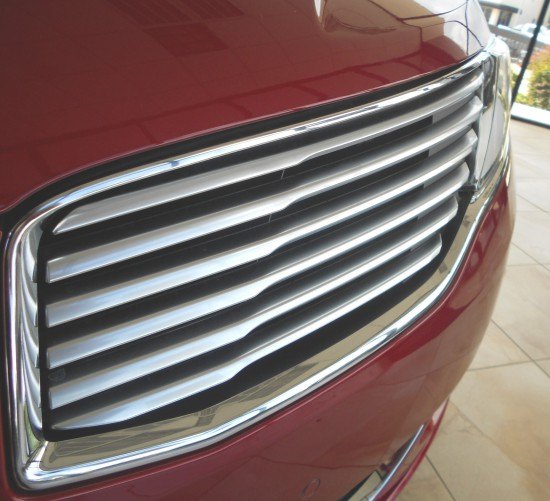















































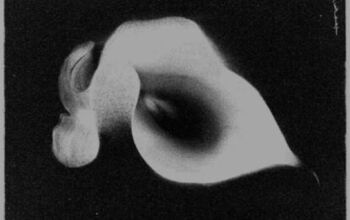
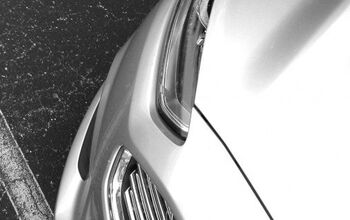
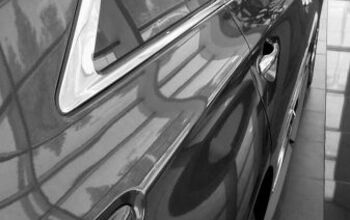
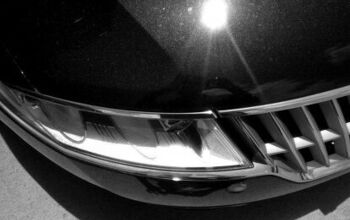














Comments
Join the conversation
The biggest problem with the MKZ isn't its sheetmetal (prefer it to the ES and maybe even the new TLX), but the fact that Lincoln didn't go far enough with the quality of materials for the interior, esp. at the price that they are asking (Lincoln did a better job in that respect with the MKC).
Maybe I just don't get what other people see or maybe it's because I own a 2011 MKZ, but for me the 2013-2014 MKZ cars are a huge step forward. Design wise they take some chances with the "butterfly" grill but journalists called the last Lincoln MKZ grill gotti or overly bold looking. Personally I like both looks and they capture American luxury lineage well. The MKZ has more chrome but is much more subdued compared to the 2010-2012 versions. Where the MKZ looses me is its sides and back, which is the same places the older gen MKZ has a lack of style. The sides of new MKZ are just too plain and Lexus ES vanilla looking and the back while original and compared to the Fusion just doesn't do it for me. I will admit when the taillights light up when at night the cars silhouette really comes through, but in broad daylight comes off a little bulbous and very undefined. The interior is where I don't get how people think the MKZ comes off as cheap. The leather is even softer and well done. The seats are better designed, softer, and offer more support. The dash doesn't have a strip of metal or wooden thrown straight down anymore, but rather materials are placed with thought and character. The console is fitted to make you feel like your in a cockpit of a jet or spaceship. The steering wheel has soft leather and the controls and buttons are greatly upgraded. Now is the car worth $40k with some added options? No. But the 2.0 ecoboost is on par with the old 3.5 motor and even with the base model starting at $34k I think it is every good as a Lexus ES or better. Is is Mercedes good or even BMW good? No, but Lincoln isn't going performance AMG on us or styling the car like the striking CLA but making a luxury cars for the masses. The Mkz is for the people who buy the Hondas and Toyotas of the world and see their Camry or Accord priced out in the low $30k range and see that for a couple thousand more they can step up into a premium/luxury vehicle.